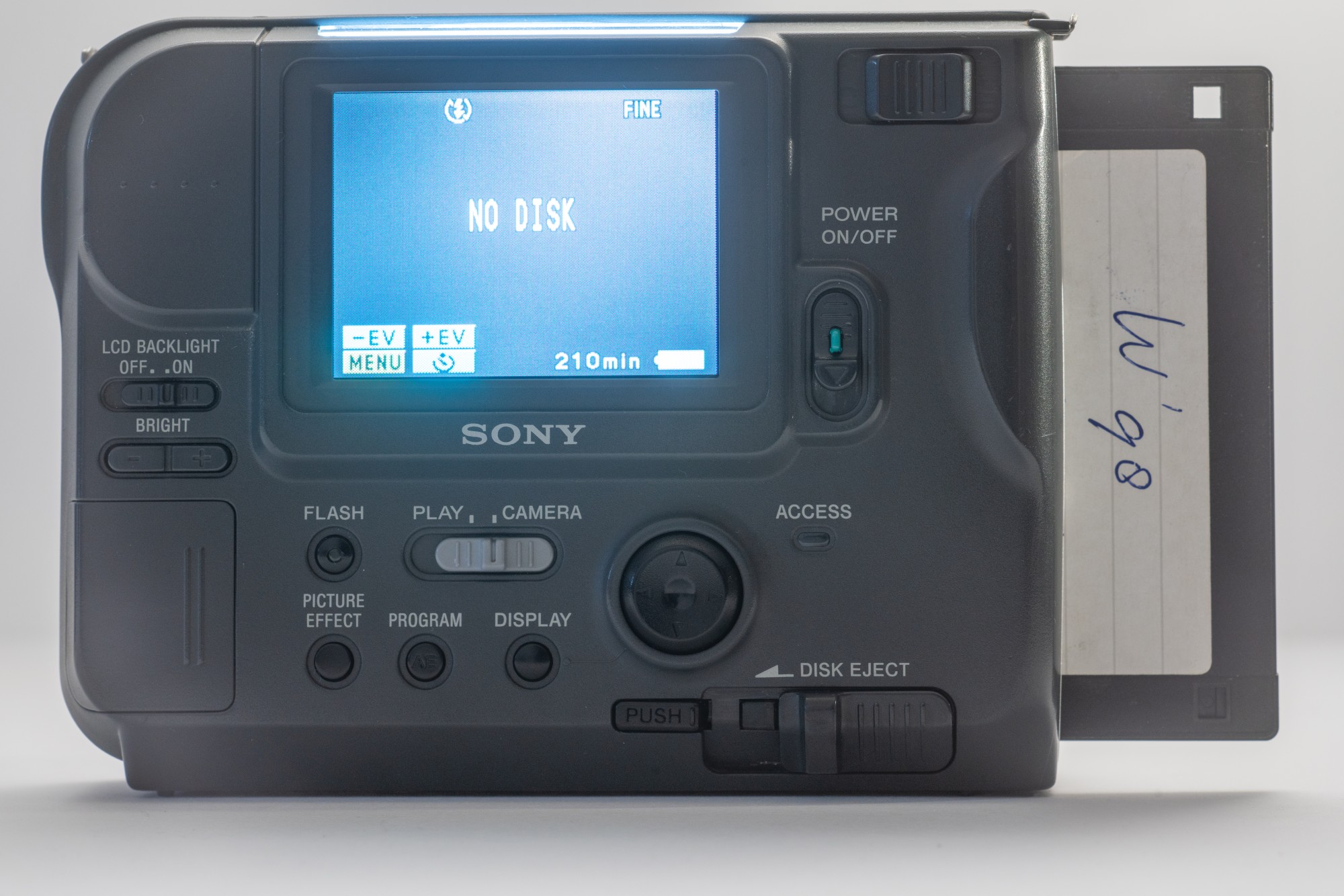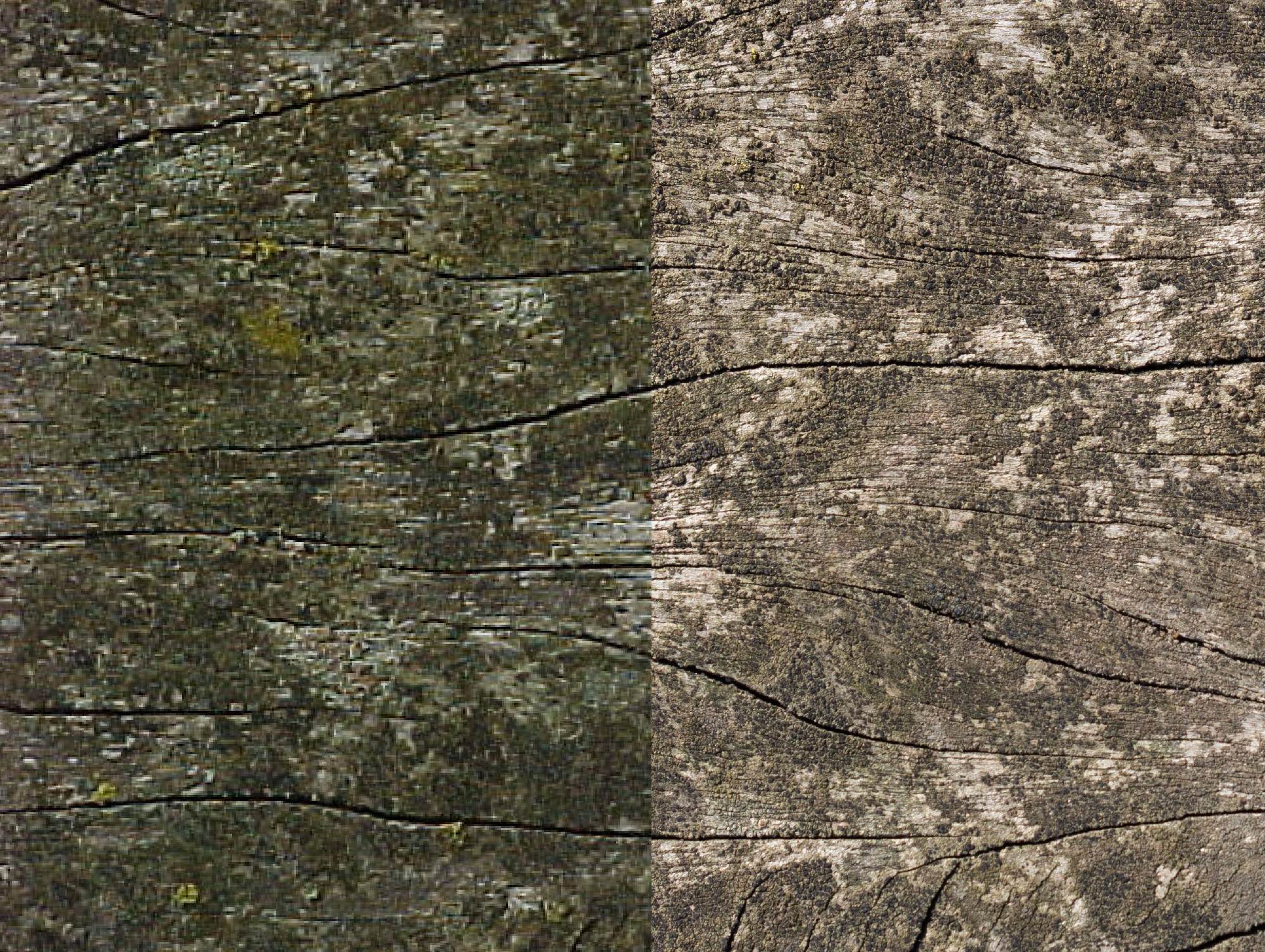Antiquities: a twenty year old camera on diskettes
 In 1998, I hopelessly dreamed of two gadgets: a handheld computer (with a keyboard, then there was almost no other) and a digital camera. I had no chance to buy either one or the other, but there was a plan , and with regard to the camera, the choice was definitely in favor of devices writing digital photos on floppy disks. Why? Very simple: memory cards were expensive, and floppy disks - here they are, in quantities. Plus ensured compatibility with any computer without any wires.
In 1998, I hopelessly dreamed of two gadgets: a handheld computer (with a keyboard, then there was almost no other) and a digital camera. I had no chance to buy either one or the other, but there was a plan , and with regard to the camera, the choice was definitely in favor of devices writing digital photos on floppy disks. Why? Very simple: memory cards were expensive, and floppy disks - here they are, in quantities. Plus ensured compatibility with any computer without any wires.The advantage of my vintage hobby is that all dreams come true, you just have to wait a little (about ten or twenty years). Recently, I bought a twenty-year-old device quite cheaply — a Sony Digital Mavica MVC-FD71 digital camera with a 0.3 megapixel matrix and a floppy disk drive. She and in 1998 was not the best representative of the new generation of cameras, but from 2019 there is no fundamental difference. Expecting something completely unsuitable for use in modern conditions, I was pleasantly surprised.
I keep the diary of the collector of old pieces of iron in real time in the Telegram . This article is also published here in a format compatible with most older computers (there are still a little more samples from the camera).

In a 1999 PC Magazine ad, Sony offers four models of cameras on diskette. FD71 - second bottom price. 700 dollars of those years is a little more than a thousand of modern ones, or the cost of a good average-level mirrorless camera. On this site, by 1998, more than 50 models of digital cameras were assigned, and for about the same money you could buy, for example, the Casio QV-7000SX with a 1.3 megapixel matrix. Neighboring ads give an idea of the price of memory cards:
')

$ 133 for 48 megabytes, or a reasonable 16 megabytes for fifty. It seems to be inexpensive - 10% of the cost of the camera itself, but twenty years ago a life hacking with diskettes seemed to me a win-win option (given that I couldn’t get anything from the above mentioned). In the late nineties, the main means of photographing was film soaps, in favor of which I even refused the Soviet cameras available in the assortment. In fact, in vain, now historical photos would be much better. The film should have been bought, then taken to the laboratory, where they will show it to you and print it for money. Digital photography promised independence from photo folders and the absence of additional costs, instant results, and besides - it was progress!

In January 1999, PC Magazine conducts comparative testing of digital cameras. The older model of the series, FD81, gets the editors' choice (she even knows how to shoot video!). If you had a lot of money in 1998, you could buy a Canon EOS D6000 . This digital SLR camera was developed in Kodak (the first camera of its own design, Canon EOS D30, will appear only in 2000) and had a 6-megapixel CCD-matrix. The megapixel race seems to have started just then, and ended somewhere in the beginning of this decade. At the beginning of the millennium, three megapixels were already considered sufficient for any tasks, although if you take a camera of those times and modern, it becomes clear that it’s not just a matter of resolution.

Let's go back to Sony. I bought it according to the “rogue” method. Usually, when looking for a particular model, and even preferably in a good condition, even the oldest trash is relatively expensive, and no one guarantees the performance of the device anyway. Several times I bought the seemingly well-preserved devices in the box with accessories for decent money, and found that, to put it mildly, they are far from ideal. Therefore, you can do differently and choose the cheapest lot, and see what happens. It often happens that these penny devices work better than expensive items.

So it happened. The camera arrived in a bag, with a new, working battery (non-original, the original one was also, and worked, but not for long). Judging by the wiped display, she was clearly loved and often used. This is not a museum piece, but everything works in it. Incredible reliability. To save battery, a separate switch could turn off the screen backlight. The display is illuminated through a special window on the upper edge, and in sunny weather, such natural light is enough (but still inconvenient). The controls are, let's say, basic: there is a flash off button, a switch for shooting and photo modes, a button for (terrible) photo effects (sepia, a negative image, and the like). The joystick can go to the menu, and in shooting mode it adjusts the exposure compensation. On the side there is still a switch that allows you to manually adjust the focus ring on the lens. Manual control of shutter speed and aperture is not, only through the "shooting modes".

But all this in 2019 is not very important. In 2019, the fastest to insert into this weighty machine diskette, press the shutter button and hear the divine sounds of the recording. And photos turn out approximately such:

According to modern standards, everything is lacking: both the resolution, the dynamic range, and the quality of the optics, but the photos are not as awful as I imagined. The file size in standard mode is from 40 to 100 kilobytes, and from 10 to 20 photos fit on one diskette. Again, this is normal compared to 36 frames of film, especially since I did not experience a lack of diskettes either then or now. Going on a trip with such a camera, you yourself can decide how many pictures you need, and take the appropriate number of floppy disks. But this is the standard mode, and there is still a quality one: the camera writes a picture in the uncompressed BMP format. This is probably the closest analogue of modern shooting in RAW.

In this mode, everything becomes very bad. Instead of 3-5 seconds, the camera writes a picture on a floppy disk for about a minute. The size of the photo is about 900 kilobytes, which means that only one frame is placed on a standard floppy disk.

This is the best that a twenty-year-old camera can offer. How is it compared to modern devices? For good, the Sony Mavica camera should be compared with smartphones. They almost completely replaced compact cameras, provide very good quality, and cost about the same (and can do more). It can be compared with modern compact cameras, for example with the same Sony RX100. But I decided not to save on pixels and made a comparison with the mirrorless camera Sony A7R II. Not fair? Perhaps, but clearly.

A JPEG photo with the original 43 megapixel resolution weighs 19 megabytes, one will need 14 floppy disks. If you shoot in RAW, then you need to have diskettes 29. The point is not only in resolution, the contribution of a higher-quality lens and a full-frame matrix is noticeable: the photo from the soap box with a crop factor around 10 turns out to be too flat. However, what else could you expect? I want to compare the camera in one picture, but it is not easy. Sony Digital Mavica keeps its ancestry from video cameras, so the aspect ratio of the images (as well as resolution) is television, 4: 3. Modern Sony digital camera shoots in 3: 2 format. It is best to compare on some flat object: you can bring the resolution of the “old” photo to the new and align the two photos in Photoshop.

Photoshop slightly distorted the perspective, aligning both photos, but still the difference is very noticeable. In both cases, only fragments of the frame are used. This is about how to photograph Jupiter through a telescope from the Earth and using the Cassini spacecraft . You have twenty years of progress in digital photography!

In the context of the late nineties, Digital Mavica is not technically the best, but reliable and quite convenient to use a digital camera. He has a tenfold optical zoom (photo above - at the maximum), a sufficient set of features for everyday photography, the most convenient way to transfer photos to a computer. You can say that even for such money even then there were better specimens. But then it could say. If I went by a time machine twenty years ago, which digital camera would I choose?

No, and this is such an interesting feature of digital photography in the context of my outdated hobby. My subjective opinion is that cameras comparable to film quality photos (I am not talking about convenience, and not about creative possibilities, but about technical parameters) appeared, very early, in the middle-end of zero. This, for example, the 12-megapixel Nikon D90 of 2008 or the first “popular” full-frame DSLR Canon 5D of 2005. Even they are compared with modern photographic equipment seem dinosaurs. In the late nineties, I probably would have filmed, not a soap box of course, but with the help of a mirror camera. Or even Zenit or Fed-5V. To some, the film still seems more attractive than numbers, but now it is more a matter of taste and creative preferences, rather than some real advantage.

But the diskette camera has one nice feature by which it surpasses many modern cameras - the almost complete absence of lag between the matrix and the display. Everything that you see on the screen happens almost in real time. In addition, if you need to copy a floppy disk, and for a number of reasons, this is your only device with a floppy disk drive, the camera allows you to do this through its own buffer. The digital camera of the late nineties is a big set of compromises, and this model in general, apparently, is a video camera without a cassette mechanism. This is an interesting artifact of the end of the last century, a forerunner of the new world, in which digital photography is something ubiquitous and taken for granted. In a sense, a useless exhibit, but, despite the complicated mechanism of the drive, this camera may well outlast my modern devices. At least twenty years already normal flight.
Source: https://habr.com/ru/post/442084/
All Articles